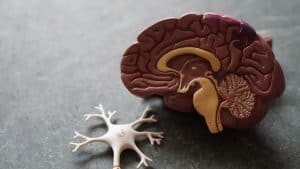
MindMaze and The Royal Buckinghamshire Hospital create brain repair platform
pharmafile | October 18, 2021 | News story | Sales and Marketing |
MindMaze Healthcare, major leader in the multi billion-dollar digital neurotherapeutics market, has announced the first UK partnership for its MindPod™ platform to target cognitive and motor restoration in stroke patients. This collaboration is with The Royal Buckinghamshire Hospital (RBH).
MindPod pioneers the world’s first immersive neuro-animation experience, and is a form of digital therapeutic which focuses on repairing the brain through high intensity and high dose complex exploratory movements. The platform uses customised sound, lighting, and movement tracking to make for an all encompassing experience.
It is based on technology developed by Johns Hopkins University School of Medicine, and is FDA-listed.
“MindPod is a complex-movement based exploration that affords a 100% immersive experience for patients. It allows us to take full advantage of a unique but short window of opportunity to repair the nervous system after a stroke,” said John Krakauer, MA, MD, Professor of Neurology, Johns Hopkins University School of Medicine and Chief Medical Advisor to MindMaze.
“It is a Pixar-level experience which recreates the enriched environments that neuroscience has shown to be beneficial in animal models.”
Ali Jamous, MD, Medical Director at RBH, said, “MindPod represents nothing less than a revolution in the treatment of stroke. In the U.K. 100,000 people have a stroke annually – that is one stroke every five minutes – yet only 10% of these people fully recover. Neuro-restoration of the arm is needed in 80% of stroke patients. Initial feedback from our patients is incredibly exciting: following a devastating neurological event, patients enjoy MindPod, they become fully engaged and motivated to continue the therapy as they lose themselves in the experience.
“MindPod gives them confidence to temporarily forget what they have lost, and instead explore what movements they can make, noticeably improving their motor function day by day as a high dose intervention that simply isn’t feasible with comparably intensive levels of conventional rehabilitation.”
Lina Adams








